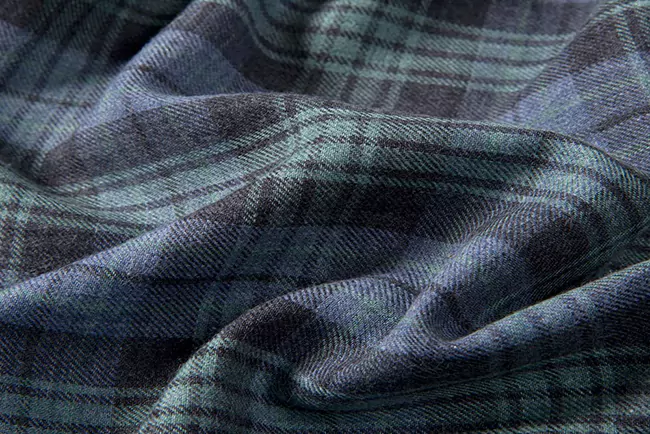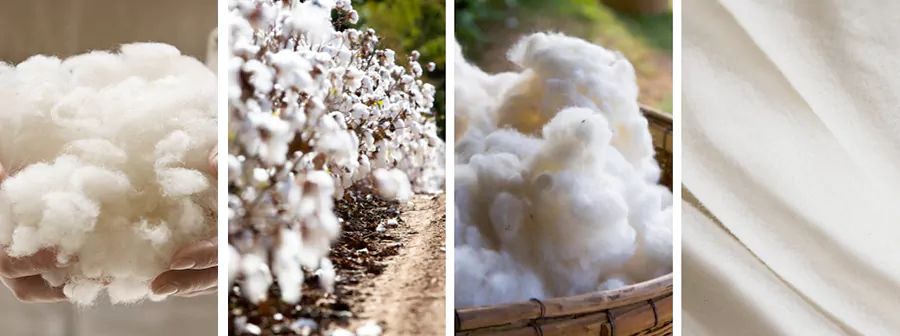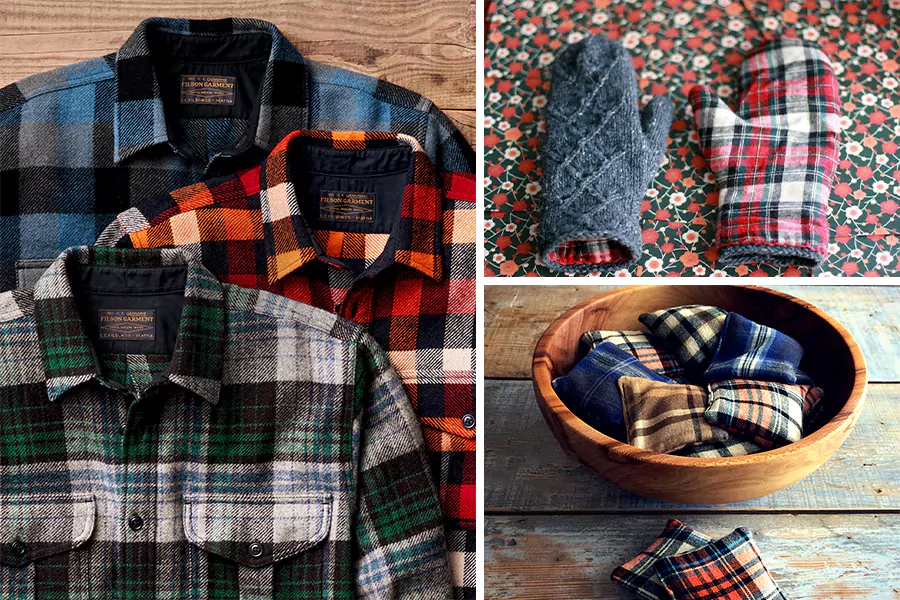Flannel fabric is the perfect blend of softness, warmth, and versatility, making it a favorite choice for everything from cozy clothing to home décor. Its signature fuzzy texture gives it a distinct feel that’s both comforting and stylish.
Whether you’re snuggling up with flannel sheets or wearing a flannel shirt, the fabric’s warmth and breathability make it ideal for chilly weather. But what makes flannel a timeless fabric choice? It’s not just its cozy appeal—it’s also the variety of ways it can be used in your everyday life.
Ready to dive deeper into the world of flannel? Learn more about what flannel fabric really is in our complete guide!
What is Flannel Fabric?

Flannel is a soft, cozy fabric that’s been a favorite for centuries. Usually made from cotton (sometimes mixed with wool or synthetic fibers), it has that fuzzy, signature finish that gives it a warm, inviting feel. This texture, called the “nap,” is either brushed into the fabric or created by a loose weave.
Flannel is not only warm and breathable, but it’s also comfortable, making it the perfect fabric when you want something snug but not too heavy.
Characteristics of Flannel Fabric
Softness and Warmth
Flannel is known for its ultra-cozy, plush feel that makes you want to snuggle up the moment you touch it. The secret behind this softness comes from how the fabric is brushed (or not). Brushed flannel is gently combed, giving it a fuzzy, velvety texture, while unbrushed flannel feels a bit smoother.
This softness is paired with warmth, making flannel perfect for colder weather. It retains heat really well, so whether it’s a set of flannel sheets or a cozy shirt, you’ll stay snug and comfortable.
Breathability and Moisture-Wicking
While flannel keeps you warm, it doesn’t make you overheat. One of the best things about flannel is that it’s breathable, meaning it lets air flow through so you don’t feel too stuffy. Plus, flannel has moisture-wicking properties, which help pull sweat away from your body, making it ideal for layering in colder climates. It keeps you dry, warm, and comfortable all day long.
Texture and Feel
The texture of flannel can range from soft and lightweight to more robust and heavy. You’ll feel the difference between a thin, smooth flannel shirt and a thicker, coarser version used for winter blankets. Brushed flannel feels super soft and fuzzy, while unbrushed is a little more rigid but still comfy.
Durability and Care
With the right maintenance, flannel can last for years, whether it’s a cozy blanket or your favorite flannel shirt. It’s more durable than cotton, and while wool can be sturdier, flannel has a nice balance of softness and strength. To keep it looking its best, gentle washing is key—avoid harsh chemicals, and always check care instructions to keep the fabric in good shape.
The History and Evolution of Flannel Fabric
Origins and Early Uses
Flannel has its roots in Wales, where it first gained popularity in the 17th century. Originally made from wool, flannel became known for its warmth and soft touch. By the 18th century, it was commonly worn by the working class, offering a cozy and durable fabric for farmers and laborers.
As time passed, flannel made its way across Europe, adapting to different needs but always keeping that reliable, comforting quality.
Flannel’s Cultural Impact
Flannel didn’t just stay in the realm of practical clothing—it became a cultural symbol. In the 1990s, flannel shirts became the uniform of the grunge movement, worn by bands like Nirvana and Pearl Jam. It was a bold statement of rebellion and individuality. Beyond that, flannel also holds a special place in various cultures, like in Scotland and Canada, where it’s often associated with rugged outdoor wear.
Modern Day Flannel
Today, flannel is still loved for its timeless appeal, but it has evolved to keep up with modern trends. Now made from a mix of cotton, synthetic fibers, and blends, flannel is more versatile than ever. And with sustainability on everyone’s mind, eco-friendly flannel options are on the rise. Whether you’re wearing it for style or comfort, flannel is still a fabric that fits right into today’s world, just as it did in the past.
How is Flannel Fabric Made?
Material Selection
It all begins with choosing the right fibers. Flannel can be made from wool, cotton, or even synthetic fibers. Wool gives flannel its extra warmth, making it perfect for chilly weather. Cotton offers a soft, breathable feel, which is great for layering. Synthetic fibers are sometimes added to boost durability and keep costs down, all while maintaining that soft, comfy feel.

Production Process
- Yarn Spinning: The fibers are spun into yarn. This part is similar to the way yarn is made for other fabrics, but for flannel, the yarn has to be soft yet strong enough for weaving. The right yarn is key to getting that cozy, comfy feel that makes flannel so special.
- Weaving Techniques: The yarn is woven into fabric. Flannel typically uses either a twill or plain weave. These weaves give the fabric a smooth but sturdy texture. The type of weave affects how the fabric feels and drapes, so it’s all about finding that perfect balance of comfort and durability.
- Brushing and Napping for Softness: Once the fabric is woven, it’s brushed or “napped” to create that signature softness. Napping means brushing the fabric to raise the fibers, giving flannel its signature fuzzy texture. Sometimes it’s done on one side, and sometimes both sides are brushed for an extra boost of softness and warmth.
Final Treatments
It’s pre-shrunk to ensure it doesn’t shrink too much when washed. Then, it’s dyed to get those rich, vibrant colors we love in our flannel shirts and blankets. Lastly, finishing treatments are applied to make sure the fabric holds up well over time, so your favorite flannel stays cozy for years.
Types of Flannel Fabric
Wool Flannel
Wool flannel is your best bet if you’re after something super warm with a touch of luxury. It’s perfect for cold weather, giving you that rich, soft texture that wraps you up in comfort. Wool traps heat really well, so you’ll stay nice and toasty without the bulk. If you need something sturdy and warm for the winter, wool flannel is a great choice to layer with.
Cotton Flannel
Cotton flannel is lighter and more breathable than wool, making it a great option for everyday use. Whether it’s for comfy pajamas, shirts, or a soft blanket, cotton flannel’s softness will make you want to snuggle up all year round. It keeps you warm without making you too hot, and its smooth feel is perfect for layering during those chilly nights or mornings.
Synthetic Flannel
Looking for something affordable but still durable? Synthetic flannel, made from polyester or nylon, is built to last and resists wear and tear. While it might not have the same cozy luxury as wool or cotton, it holds up well and is a great option for everyday wear. It’s budget-friendly, so it’s perfect for larger projects or if you want something that’ll stand the test of time.
Organic and Eco-Friendly Flannel
If you’re into sustainability, eco-friendly flannel made from organic fibers is the way to go. Made with sustainable practices, this flannel helps reduce environmental impact without sacrificing softness or warmth. Whether it’s organic cotton or other plant-based fibers, this option gives you that cozy feel while supporting eco-conscious choices.
Flannel vs Other Fabrics: Key Comparisons
Flannel vs Plaid Fabric: What’s the Difference?
Let’s clear up the confusion right away: flannel and plaid aren’t the same thing. Flannel refers to the fabric itself, while plaid is a pattern. You can have a plaid pattern on flannel, but not all flannel fabrics are plaid! Plaid can be made from cotton, wool, or yes, even flannel.
So, to put it simply: flannel is the fabric, and plaid is the pattern. Popular plaid patterns on flannel include classic reds, greens, or even black-and-white checks—super cozy and stylish!
Flannel vs Fleece
Both flannel and fleece are cozy, but they offer different benefits. Flannel is soft, breathable, and provides light to moderate warmth, making it perfect for cooler days without being too heavy. It’s great for layering when the weather’s crisp.
Fleece, however, is thicker and warmer, offering more insulation against the cold. It feels plush and holds heat really well, but it’s less breathable than flannel, so it can get a little too warm. If you’re looking for something that’s breathable and warm, flannel is your best bet; for maximum warmth, fleece takes the crown.
Flannel vs Wool
When comparing flannel to wool, you’re looking at two great fabrics, each with its own set of perks. Wool is a natural insulator, making it great for really cold weather—it even keeps you warm when wet! However, wool can be heavy and a bit scratchy for some people.
Flannel, on the other hand, is lighter and softer to the touch, making it perfect for layering in fall or winter without feeling too bulky. So if you’re after warmth minus the itchiness, flannel might be a better choice.
Flannel vs Cotton
Flannel is essentially a brushed version of cotton, giving it that soft, fuzzy texture. Regular cotton fabric is smooth and lightweight, making it ideal for warmer weather and lighter garments.
But cotton flannel has been brushed to enhance its warmth and softness, which is why it’s a go-to for cozy shirts, pajamas, and quilts. The brushing process adds a unique finish that makes flannel much softer and more suitable for cooler temperatures than plain cotton fabric.
Uses of Flannel Fabric
Apparel
Flannel shirts are a staple in casual wear—whether you’re heading out on a weekend adventure or just lounging at home, they offer that perfect mix of comfort and style. But flannel isn’t just for shirts!

You’ll find it in dresses, skirts, and even jackets, making it a great fabric for adding warmth while still looking chic. And let’s not forget about flannel loungewear and sleepwear, like cozy pajama sets and blankets that keep you wrapped in warmth all night long.
Home Décor
Flannel’s softness and warmth make it perfect for home décor, especially in the colder months. You’ll see it in bedding, from sheets to comforters and throws, adding an extra layer of coziness to your bedroom. It also works wonders in curtains, pillows, and even upholstery, creating a snug atmosphere for your living room or any space you want to feel warm and inviting.
And if you’re into quilting, flannel is an excellent choice for quilts and throws—it’s durable, soft, and gives your projects that cozy, snuggly finish we all love.
Flannel Accessories
Scarves, hats, gloves, and bags made from flannel are all the rage, adding a stylish touch to your winter wardrobe while keeping you warm. Flannel accessories are perfect for the colder seasons, with plaid patterns and soft textures that are both fashionable and functional. So whether you’re looking to add a pop of cozy style to your outfit or gift something thoughtful, flannel accessories are a win
The Cost of Flannel Fabric
When it comes to buying flannel fabric, the price can vary quite a bit depending on a few key factors. So, let’s dive into what affects the cost and how you can find the right fabric for your project, whether you’re working with a tight budget or looking to treat yourself to something premium.
Factors That Affect the Price of Flannel
Material
The material makes a big difference in the cost of flannel. Cotton flannel is typically the most affordable, while wool flannel tends to be more expensive due to the cost of wool. Synthetic options, like polyester, are usually the least expensive, but they may not feel as cozy as cotton or wool.
If you’re after something luxurious, organic cotton or wool flannel will cost a little more, but you’re paying for that extra quality and warmth.
Weave
Some weavers use techniques that create a denser, softer fabric, which can raise the cost. Higher-quality weaves usually result in smoother, more durable fabrics, making them perfect for projects where softness and longevity are key, like quilts or special garments.
Quality and Treatments
The quality of the fabric goes hand in hand with extra finishing treatments. If you’re looking at flannel that’s been pre-shrunk, treated with vibrant dyes, or even made flame-resistant or waterproof, those added features will make the fabric pricier. But for projects that need extra durability or special properties, these treatments can absolutely be worth the investment.
Affordable vs Premium Flannel
If you’re working on a project that doesn’t need high-end fabric, affordable flannel can still do the trick. For everyday quilts or casual wear, inexpensive cotton or polyester flannel is perfect.
But if you’re aiming for a luxury quilt or something truly special, premium wool or organic cotton flannel might be the better option. These fabrics offer top-notch softness, warmth, and overall quality, especially for heirloom projects that you’ll treasure for years to come.
Average Price Range for Flannel Fabric
Flannel prices can vary depending on what you’re after. On the lower end, basic cotton or polyester flannel runs about $4 to $7 per yard. Mid-range options, like higher-quality cotton or blended flannel, typically cost $8 to $12 per yard.
If you’re eyeing premium wool or organic cotton flannel, you’re looking at $15 or more per yard, especially if it’s been treated with special finishes. Keep in mind that prices can fluctuate based on where you shop or if you catch a sale.
How to Care for Flannel Fabric?
Cleaning Tips
Flannel is pretty easy to clean, but there are a few things to keep in mind.
- 1.Machine washing is usually fine for most flannel items, but always check the care label just to be sure.
- 2.If you’re dealing with a more delicate piece, you might want to go for hand washing, especially if it’s a wool blend or a vintage piece.
- 3.For machine washing, go with cold water to preserve the fabric’s softness and prevent shrinking.
- 4.Tumble dry on low or even air dry it to maintain the fluffiness and warmth of the fabric. High heat can damage the fibers, so try to avoid it if you can.
Ironing Flannel
Flannel doesn’t wrinkle as easily as other fabrics, but if you find that it’s a little crinkled after washing, ironing is totally an option.
However, you don’t have to iron flannel unless you really want to—most of the time, you can just shake it out and let it air dry. If you do need to iron, be sure to iron on low heat. To protect the fabric, place a thin cloth between the iron and your flannel to avoid direct contact. This is especially important if you’re dealing with a more delicate or high-quality flannel.
Maintenance Tips
Flannel gets softer with age, so no need to stress about it wearing out.
- Skip fabric softeners too often, as they can leave a coating that makes the fabric less breathable.
- For extra softness, try a light vinegar rinse during the wash to help break down build-up without harming the fabric.
- Be gentle when washing and drying to prevent pilling.
- Avoid high-friction spots (like tossing it around too much in the dryer) to help keep pilling at bay.
- Pilling happens when fibers get tangled, so the less agitation, the better.
- If pilling does occur, simply use a fabric shaver to gently remove it.
Conclusion
lannel is a fabric that truly stands the test of time. Whether you’re creating cozy quilts, comfy clothing, or soft home décor, flannel offers unbeatable warmth and comfort. It’s durable, softens beautifully with age, and is perfect for a variety of projects, making it a must-have in every home and wardrobe. With just a little care, it’ll last for years!
Now that you know all about flannel, why not dive into your next project? From bedding to scarves to quilts, flannel is the fabric to choose. For your next flannel fabric purchase, check out F&A Fabric. Whether you’re on a budget or looking for premium options, they’ve got exactly what you need!
